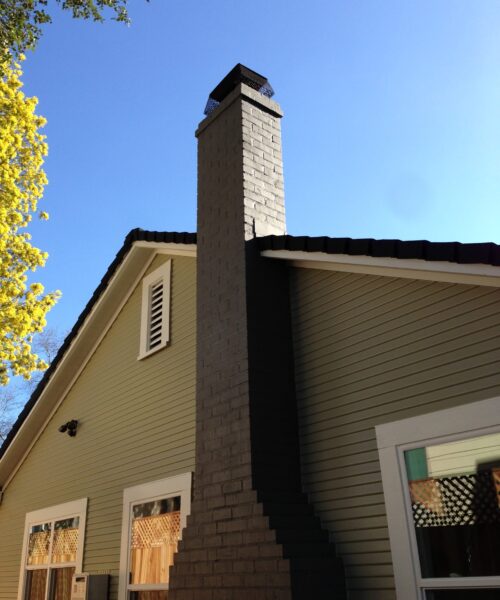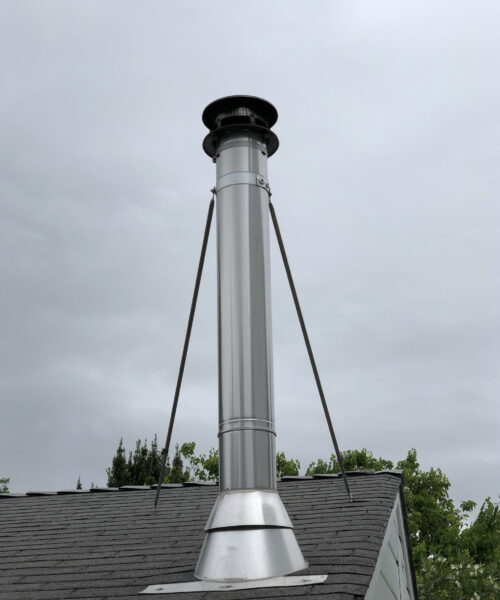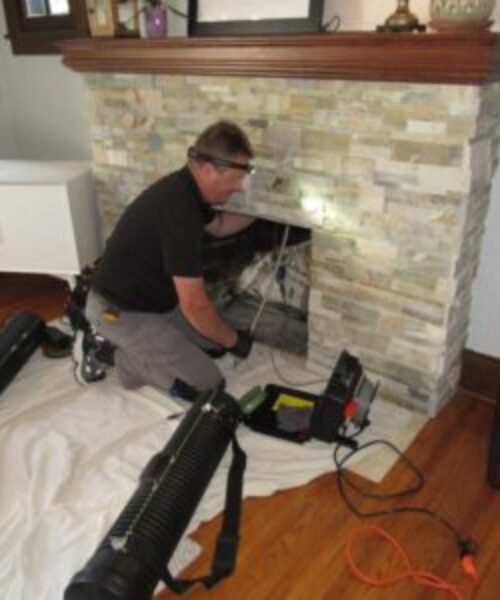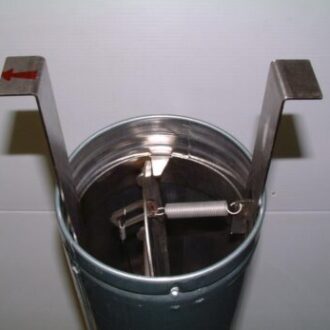section-96fd7ea
Chimney Cleaning
Open Fireplace
This type of fireplace is your standard brick constructed chimney.
Factory Built / Pre Fab / Zero Clearance
A Factory Built type fireplace can be found in most all newly constructed homes. These are prefabricated and have a metal pipe which vent the gases up through the roof and out of the home.
Freestanding Wood Stove
A freestanding wood stove which has a pipe connected to the top of the stove and is vented out through the roof of the home.
Freestanding Pellet Stove
A pellet stove is a stove that burns compressed wood or biomass pellets. This type of pellet stove is freestanding.

section-47574b8

Lined Insert
This is a wood stove Inserted into an existing brick chimney. In this type of installation the wood stove has it's own pipe connected to it which travels up through the top of the existing chimney to vent.
Unlined Insert
This is a wood stove inserted into an existing brick chimney. In this type of installation the wood stove uses the existing chimney flue to vent and no stove pipe is installed. This type of configuration is no longer recommended. Homes with this setup should be converted to a Lined Insert.
Pellet Stove Insert
A pellet stove is a stove that burns compressed wood or biomass pellets. In this type of installation the pellet is inserted into an existing chimney. The stove has it's own pipe connected to it which travels up through the top of the existing chimney to vent.
section-eb489ac
Chimney Inspections / Real Estate

NFPA recommends that all chimneys, fireplaces and vents be inspected annually
The National Fire Protection Association (NFPA)'s 211 (Standard for Chimneys, Fireplaces, Vents and Solid Fuel Burning Appliances) is the standard upon which Napa Valley Chimney Sweepers base our services. This standard classifies chimney and venting system inspections into three levels. Level I, Level II or Level III. Each level of inspection has a specific scope of work and specific criteria.
Lvl I Inspection
This inspection is recommended when the chimney and venting system is easily accessible and when the homeowner is planning to maintain its current use. In general, this is the level of inspection performed in most homes. In a Level I inspection verifies that the chimney structure is sound and that the chimney is free of obstructions and combustible deposits, such as creosote.
section-cc88926
Lvl II Inspection
The addition of a new home heating appliance or a change in the type of fuel a homeowner is burning requires a Level II inspection. This inspection level is also required upon the sale or transfer of a property or after an operating malfunction or external event that is likely to have caused damage to the chimney. The scope of a Level II inspection includes that of the Level I inspection plus the inspection of accessible portions of the attics, crawl spaces and basements. It may also include a performance test such as a smoke test or a pressure test and possibly an interior chimney video inspection if recommended by the certified chimney sweep.

section-514c8d9
Lvl III Inspection
When a Level I or Level II inspection suggests a hidden hazard and the evaluation cannot be performed without access to concealed areas, a Level III inspection is recommended. This type of inspection confirms the proper construction and condition of concealed portions of the chimney structure and the flue. Level III inspections are generally necessary when investigating an incident that has caused damage to a chimney or building, or where a hazard is detected and suspected.

section-a8cf21b
Cap / Spark Arrestor Installations

Galvanized

Stainless Steel
section-a015cdd
Damper Installations

Lock-Top II
Stainless Steel

Spider Damper II
Stainless Steel
section-45c9b1a
Crown / Wash Repairs

contact-fields
Request A Quote?
Got a question?
